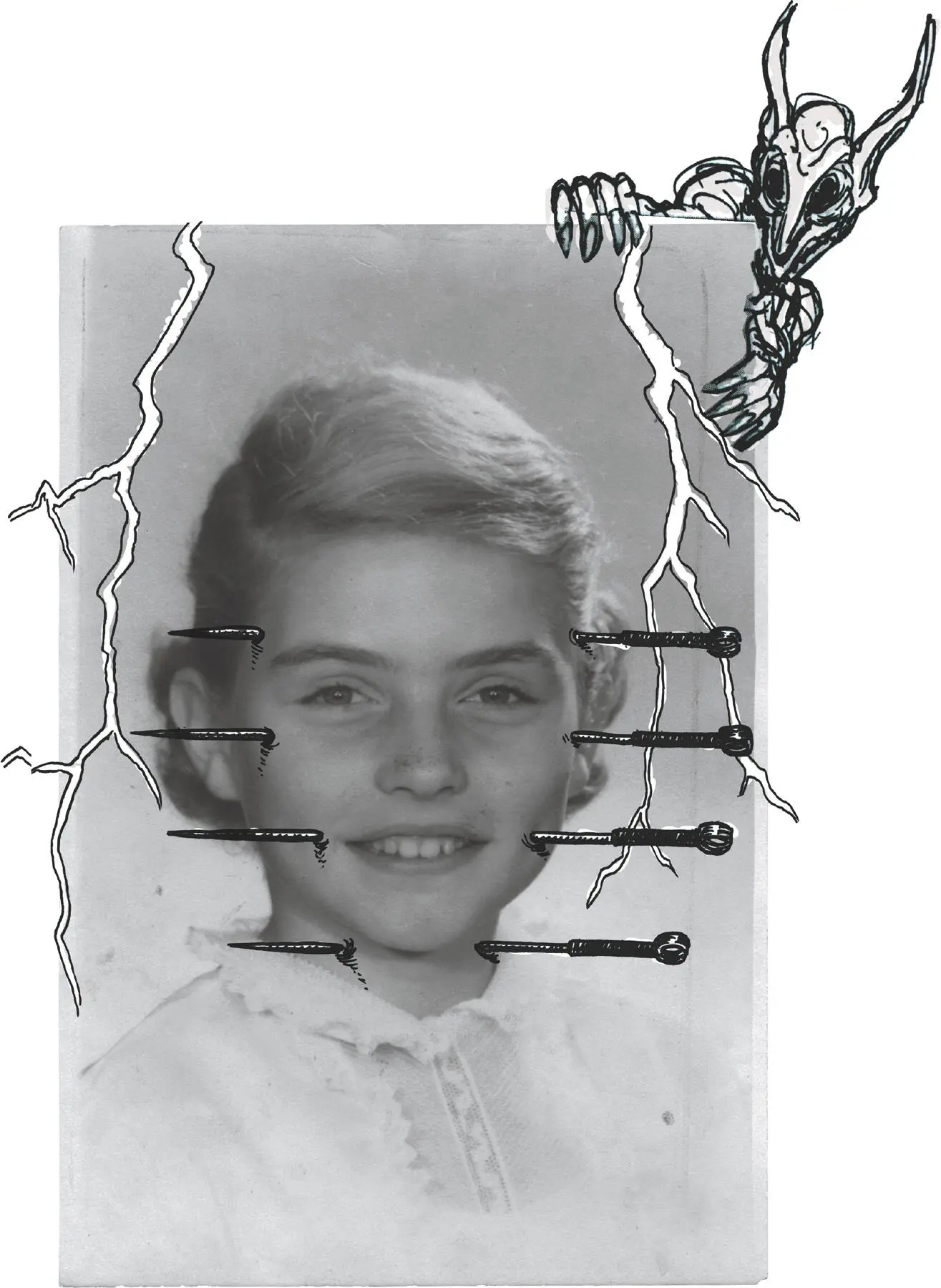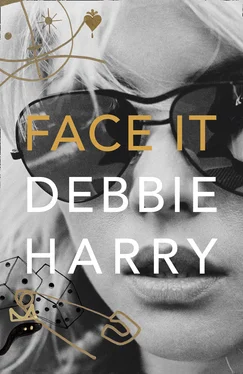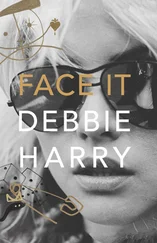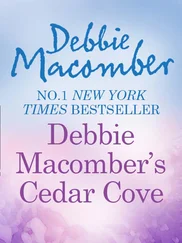Me, I graduated with an associate of arts degree. I found a job in New York, but I couldn’t live there, I had no money, so I commuted back and forth, which I hated. I spent hours looking for an apartment in the city, but I couldn’t find anything remotely affordable. I guess I was moaning about it to my boss Maria Keffore at work. Maria, who was a very pretty Ukrainian woman, said, “Oh, you don’t have to worry. Come see my apartment. The rent is only seventy dollars a month.” OH MY GOD, how can it be so cheap, I thought, what must it be like? Well, it was fantastic. It was on the Lower East Side, which was a Ukrainian and Italian neighborhood at that time, and under rent control.
With Maria’s help I found an apartment with four rooms for just $67 on St. Mark’s Place. That first night in my new home, lying on the bed listening to the sounds of the street floating through my window, I felt like I was finally, twenty years into my life, in the place where my next life would begin.

They used to say I looked European.
Childhood and family photos, courtesy of the Harry family
Sean Pryor
3
Click Click

Dennis McGuire
I hated my looks as a kid but couldn’t stop staring. Maybe there were one or two pictures that I liked, but that’s all. For me, capturing those looks on film was a horrible experience. Eventually the peeping, secretive, naughty aspect of it made being photographed all right, but voyeurism was not part of my vocabulary as yet. How could I know then that this face would help make Blondie into a highly recognizable rock band?
Does a photograph steal your soul? Were the aboriginal people right? Are photographs part of some mystical image bank, a type of visual Akashic record? A source of forensic evidence to examine the hidden, darker secrets of our souls, perhaps? Now, I can tell you that I’ve had my picture taken thousands of times. That’s a lot of theft and a lot of forensics. Sometimes I read things into those pictures that no one else seems to see. Just a tiny glimpse of my soul maybe, a passing reflection on a piece of glass . . . If you were me, by now you might be wondering if you had any soul left at all. Well, I had one of those Kirlian photographs taken once at a new age fair—and there supposedly was my soul, my aura, staring back at me. Yes, maybe there is still some of my soul to go around.
I was working in an almost soulless place: a wholesale housewares market at 225 Fifth Avenue, a huge building full of everything you can think of that had to do with housewares. My job was selling candles and mugs to buyers from the boutiques and department stores. This had not been part of the dream. I started thinking that since I was pretty—well, my high school yearbook had named me Best-Looking Girl—maybe I could get some modeling work. I’d met two photographers, Paul Weller and Steve Schlesinger, who did catalog work and paperback book covers, and I decided I would make a portfolio. My modeling book had shots running from hairstyles to yogic poses in a black leotard. What was I thinking? What kind of jobs could I possibly get with these weird photographs? Answer: one and done.
Then I saw a blind ad in the New York Times looking for a secretary. It turned out to be for the British Broadcasting Corporation. This was my first link to what would become a long, lovely relationship with Great Britain. They gave me the job on the strength of the sensational letter that my uncle helped me write. Once they had me, they realized that I wasn’t very good at what I was supposed to do, but they kept me anyway and I grew into the job. I learned to operate a telex machine. I also met some interesting people—Alistair Cooke, Malcolm Muggeridge, Susannah York—who came into the office/studio for radio interviews.
Plus, I met Muhammad Ali. Well, not exactly met him. “Cassius Clay is coming in to do a TV interview,” they said, so I snuck around the corner and wow, I saw this big, beautiful man walk into the TV studio and close the door. It was a soundproofed room with a small window way up high, so I decided, being athletic, that I was going to grab the windowsill and pull myself up and watch the taping. But, as I pulled myself up, my feet kicked the wall with a thud. In a flash, Ali’s head whipped round and he stared right at me. He nailed me and I was transfixed. He’d responded with the animal instinct and lightning reflexes of the supreme champion he was . . . I quickly dropped down to the floor, shocked and excited by the primal exchange. I could have gotten into trouble, particularly if they had already started to record, but fortunately no one else in the room had even noticed.
The offices for the BBC New York were in the International Building at Rockefeller Center, directly across from the monumental St. Patrick’s Cathedral. When I was working at the BBC, I believe Fifth Avenue was a two-way street, and the traffic was immense. A block south of the cathedral was Saks Fifth Avenue. In front of the International Building was and still is the enormous bronze statue of Atlas holding up the world. Behind it is Rockefeller Plaza, where the skating rink and the big Christmas tree are located during the holidays. During the summer the rink becomes an outdoor café. Directly behind the rink is the NBC building, with the Warner Bros. offices nearby too.
Strolling past the store windows and through the canyons of buildings was always interesting, and I made it a point to go over to visit one of my favorite characters, “Moondog.” This tall, bearded old man with his horned Viking helmet was a vision. He stood on the corner of Sixth Avenue and Fifty-Third in his long reddish cape holding his spearlike pole, selling booklets of his poetry. Moondog now has his own Wikipedia page, but back then few people who walked past him knew who the fuck he was. Most people steered clear of or didn’t even notice him—just another crazy “weirdo” to avoid or blank out.
Some thought he was an eccentric, blind, homeless man, but he was much more. Moondog was also a musician. He had an apartment uptown but kept his image and his privacy closely guarded. He designed instruments and also recorded, and he became adored by most New Yorkers. A beloved fixture, a true New York character who sometimes recited his poems to the businessmen and tourists hurrying past him. He was freaky but he was fondly called the Viking guy—even if no one knew about all his artistic achievements.
And then there were the more sinister types: the silent men in black selling small newspapers or booklets. They were serious, intense, kind of scary, which made them all the more intriguing, of course. They called themselves “the Process”—short for the Process Church of the Final Judgment—and were scary but compelling in their intensity. Never alone, they stood in groups on the midtown corners in their quasimilitary black uniforms.
Scientology wasn’t so well-known at the time, but cults, communes, and radical religious movements would come and go all the time. I wasn’t aware completely of Scientology or the Process Church, but I respected the commitment it took for these guys to stand and deliver in midtown to a straight bunch of bros. They roamed around downtown as well, among much more sympathetic audiences in the West and East Village.
It was a business, it was a religion, it was a cult; maybe it still is but I don’t think they call it the Process anymore.
Читать дальше














